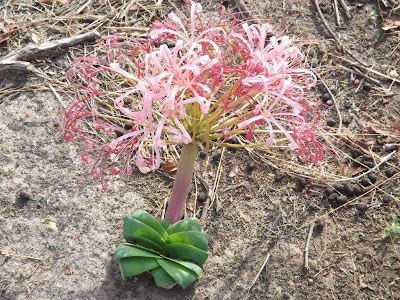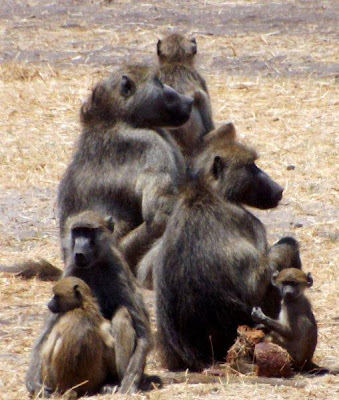On Friday we drove out to Tshompani to find out some specifications for the borehole. It isn’t a particularly long way from Sinamatella – no more than about 30km in a straight line and 60km by road but the early rain has been very patchy and there are some strong contrasts along the way. The bush around Sinamatella is only just starting to show green and the elephants left us a few weeks ago but Shumba and beyond has had rain and there are many fully-green trees, even some green grass, and there are plenty of elephants enjoying the fresh food.
At Shumba we met a nice group of elephants drinking at the pan. A couple of them were right in the water and it was interesting to see how deep it still is…..
When there’s good food and plenty of water, the elephants are usually pretty relaxed but for some reason this one didn’t seem to be too keen on us so we moved on…
After measuring the depth of the borehole at Tshompani Dam, we continued on to Tshompani Pan to have lunch. When we arrived we found the pan more or less dry….
But soon it started to rain and within minutes it was pouring down so that we could hardly see anything out of the windscreen …..
It poured for about fifteen minutes then, as the view cleared and the storm moved away, we found ourselves looking at a very different pan, now holding a wide, shallow pool of muddy grey water……..
It didn’t take long for the local wildlife to respond and along with swarms of dragonflies and other insects, a small Marsh Terrapin Pelomedusa subrufa, that had presumably been hidden underground back in the Mopane scrub, came sliding down to the water in a stream of run-off.
I picked it up to check its species and can certainly confirm Bill Branch’s comment in his Field Guide to Snakes and Other Reptiles of Southern Africa “ …they have an unpleasant musky smell” but this one must have been in a good mood or he hadn’t realised he’s supposed to be “…belligerent….and ever-willing to bite” because he behaved impeccably and posed nicely for the camera. We left him alone and he quickly scuttled off and vanished into the muddy water.
On the way home we stopped off at Gusu Pan where we again found plenty of water and some elephants…..
And nearby Sue photographed some Scadoxus multiflorus
Back at Sinamatella we were delighted to find that 14mm of rain had fallen at last.
Next day we woke early to go to Baobab Pan. As the sun rose it looked as if we could expect more rain….
We found a Single-striped mouse Lemniscomys rosalia, out and about foraging for seeds. It will be a while before the good times arrive for a seed-eater such as this so it can’t afford to waste feeding time just because of a threat of rain. …
In fact the clouds cleared and by the time we got to Baobab it was very hot and humid. There was plenty of water in the pan and there were many dragonflies mating and laying eggs. They are very active and not easy to photograph…..
Though this Damselfly perched on a twig for a while and made things easier…..
The air was full of the sound of Cicadas and while we were searching for some to photograph we came across a beautifully camouflaged Foam-nest frog Chiromantis xerampelina…
The Cicadas were even better camouflaged and it was a long time before we tracked down one perched on a small enough twig to stand out against the background…….
I was excited to find a pair of Foam-nest frogs actually making their nest and laying their eggs. The nest is made from a protein, secreted by the female and beaten to a foam with her hind legs. The eggs are deposited inside and when the tadpoles hatch they drop out into the water below. We see many of the nests each year but have never before seen one being made. In the photo the frogs are just visible at the top of the huge ball of foam they are making….
There was plenty to keep us occupied and Sue took a lot of photos – once again, thank goodness for digital cameras! On the way home we saw a flash of yellow in a small pan. Sue waited patiently and was rewarded with a mating pair of Edible Bullfrogs Pyxicephalus edulis coming to the surface and giving her a long, lazy stare…
We also found some beautiful Ammocharis tinneana in flower…
All that and the rainy season has hardly begun! It is not a time of year that is popular with visitors because the game viewing is often very poor but if you keep your eyes open there’s plenty of interest to be seen and the birding is great too – but that’s a subject for another day.

















































